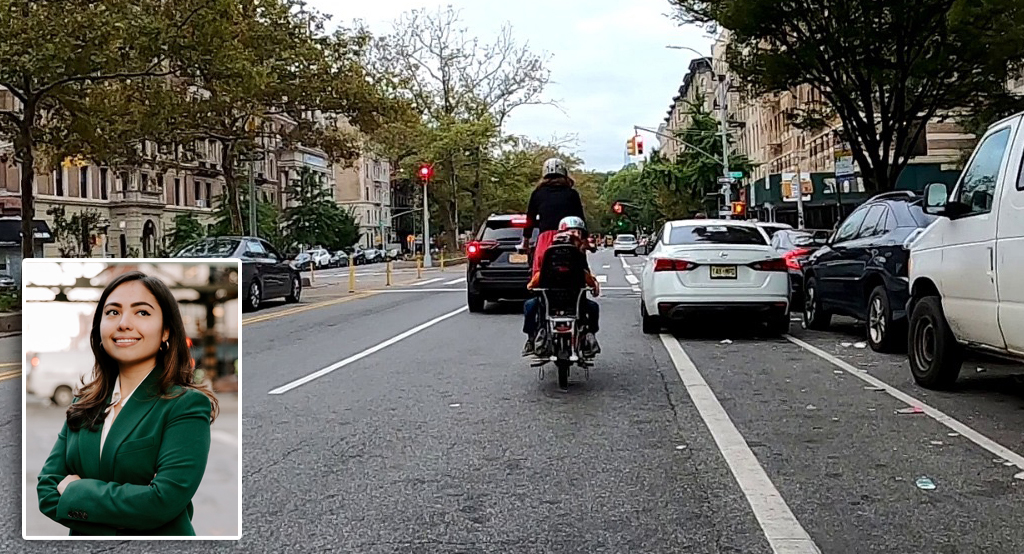
Situated between Midtown and the West Side Highway with Lincoln Tunnel and Port Authority traffic running through it constantly, Hell's Kitchen may very well be the New York City neighborhood most antagonized by motor vehicles. It is no surprise that the area has spawned one of the most active and articulate community groups in the city on Livable Streets issues, the Clinton/Hell's Kitchen Pedestrian Safety Coalition.
In May one of the organization's leaders, Christine Berthet, sent a letter to Deputy Mayor Dan Doctoroff urging him to get cracking on the creation of "a comprehensive transportation plan" that puts "pedestrians, mass transit commuters and cyclists first." Well, last week, Berthet got a reply from the Deputy Mayor. While we have known for some time that Doctoroff's team has been hard at work on a big, secret transportation and land use planning initiative, his letter to Berthet still contains some genuine, heard-it-hear-first information.
The first piece of news is Doctoroff's acknowledgement that congestion is a "major problem" that "will only get worse unless we act." The Bloomberg Administration has thusfar been slow to acknowledge that New York City has a problem when it comes to traffic congestion. In fact, DOT Commissioner Iris Weinshall and Mayor Michael Bloomberg often brush off traffic complaints with the argument that congestion is the sign of a healthy urban economy. Doctoroff's letter seems to indicate an altogether new line of thinking on traffic and transportation at City Hall.
The second news item is Doctoroff's announcement that he is "looking carefully" at ways "to shift travel... away from the automobile and onto transit." Put more simply Doctoroff is, essentially, saying: New York City needs to reduce the number of private motor vehicles on city streets. This is virtually a reversal in policy. Under Commissioner Weinshall and Deputy Commissioner Michael Primeggia, DOT has seemingly operated under the assumption that its job is to "keep the traffic moving" and "increase capacity" no matter how many car and truck drivers wish to cram themselves into the city on a given day. A policy of mode-shifting would be a significant change that finally, at long last, puts New York City on the same traffic-reduction track as cities like London and Paris.
The final nugget of news here is Doctoroff's announcement of pedestrian improvement projects already underway at specific locations throughout the city -- Times Square, Herald Square, Penn Station and Astor Place.
Here is the letter in full:






